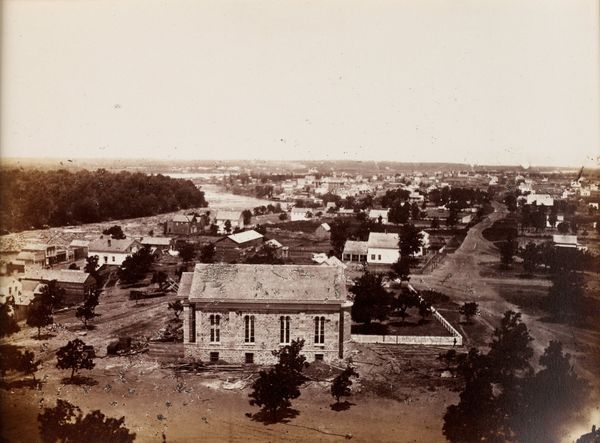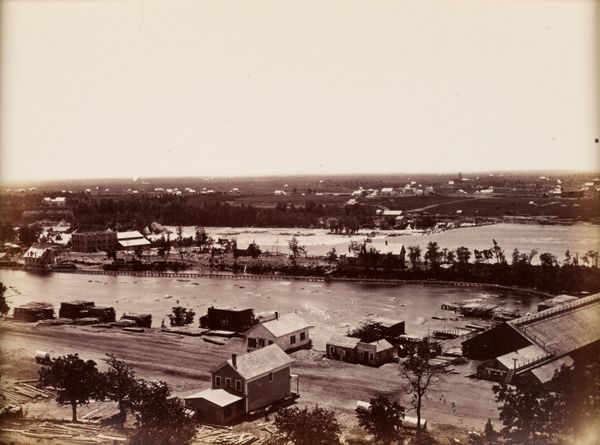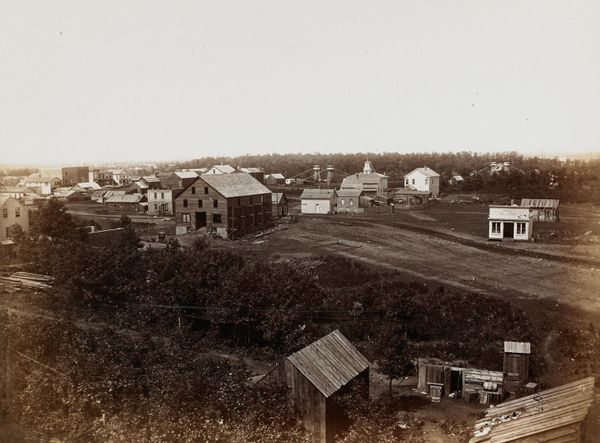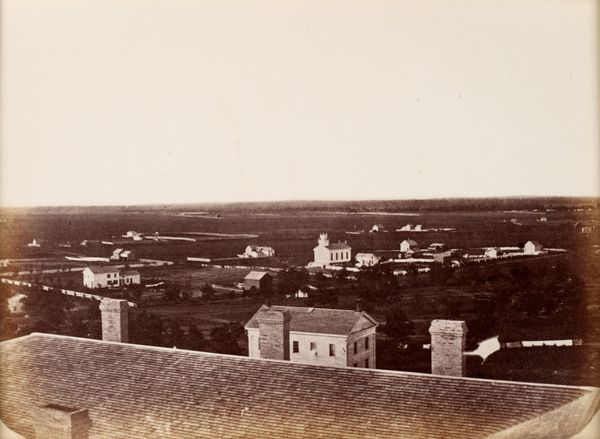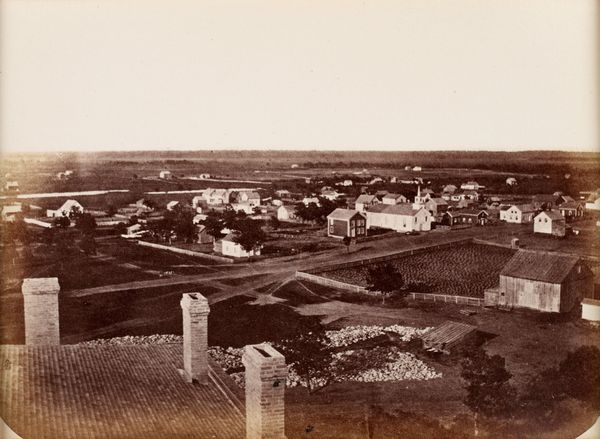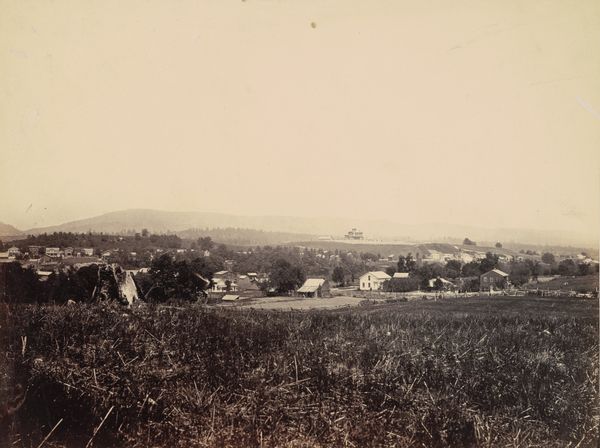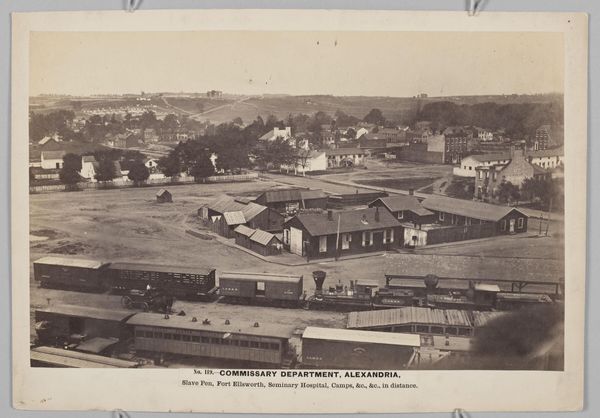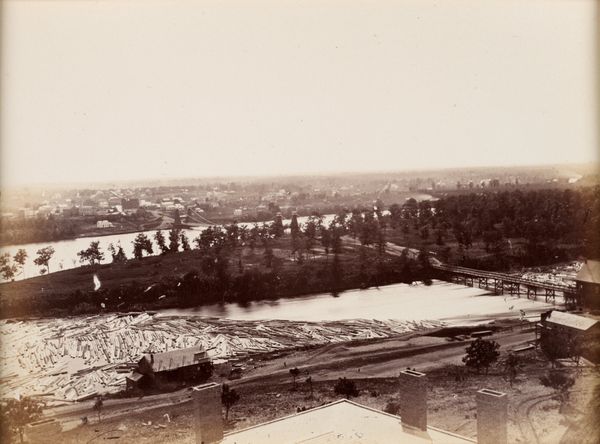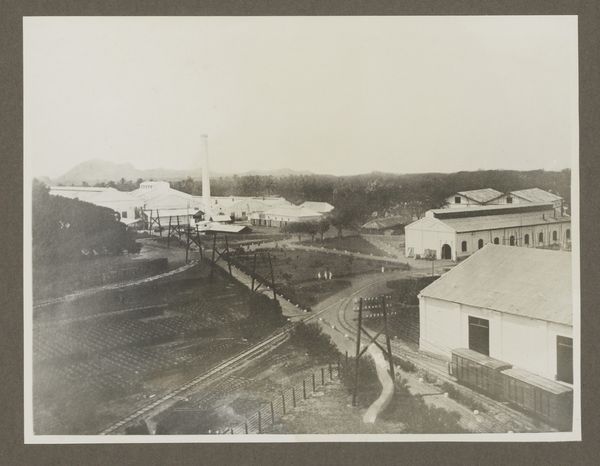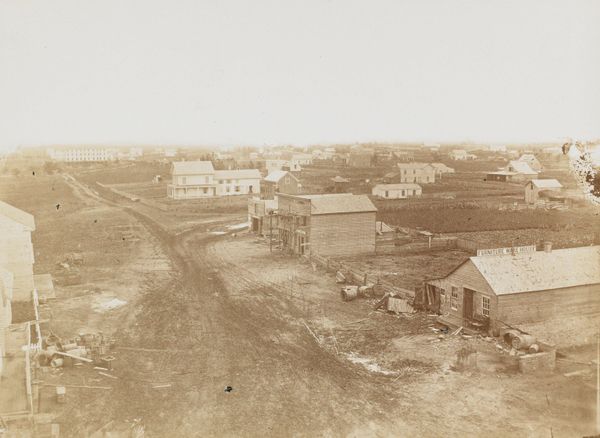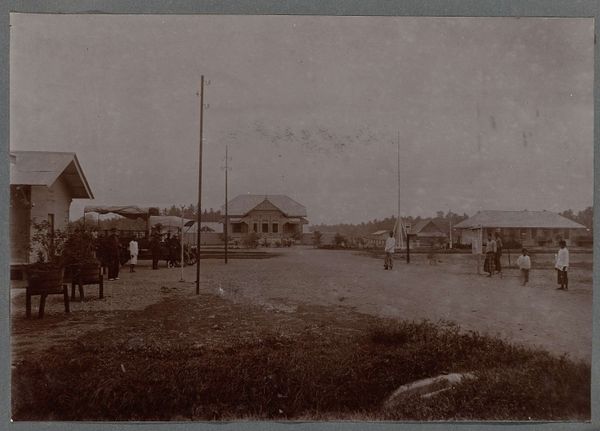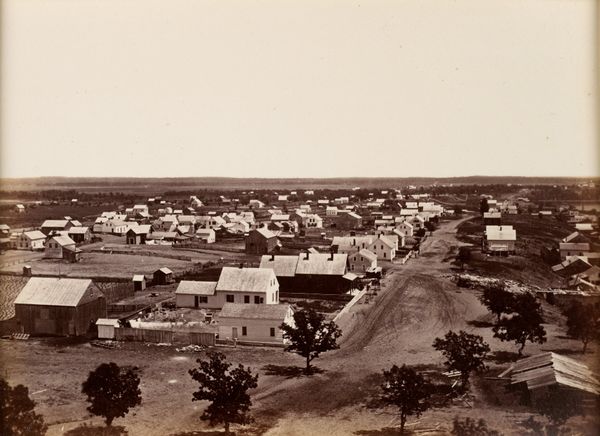
plein-air, photography, albumen-print
#
plein-air
#
landscape
#
atmospheric exterior photography
#
photography
#
hudson-river-school
#
19th century
#
united-states
#
ancient grandeur
#
cityscape
#
regionalism
#
albumen-print
#
realism
Dimensions: 6 1/16 x 8 1/4 in. (15.4 x 20.96 cm) (image)10 x 11 3/4 in. (25.4 x 29.85 cm) (mount)
Copyright: Public Domain
Curator: Looking at this print, my immediate impression is the depth and range of sepia tones; the subtle variations create an intricate play of light. Editor: And a story. This albumen print, entitled "St. Anthony and Minneapolis," created by Benjamin Franklin Upton in 1857, is more than just a pleasing arrangement of tones; it is an intersectional reflection on American expansion, manifest destiny, and Indigenous dispossession. Curator: Dispossession is heavy indeed here. It's a fascinating study of composition, how the structures cluster on one side and dissipate on the other, framing that dark flow of water. A superb tonal study. Editor: Certainly. Consider the history of photographic portraiture. It often reinforces systems of power through strategic framing. In this "landscape," the burgeoning city on the left directly threatens the dwindling natural landscape to the right, pushing it back from whence it came, much like its Indigenous stewards. Curator: I appreciate how Upton captured the raw, nascent energy of the growing metropolis through contrasts in light and texture, framing its progress. The details throughout invite extended examination. The texture! You feel it. Editor: A manufactured, imposed progress on the traditional homelands of the Dakota people. If we consider Roland Barthes' concept of myth, this photograph naturalizes a particular vision of history that needs unpacking and resisting. Curator: Surely the photograph bears an ambivalent witness; a material document capable of withstanding multiple interpretations? Upton’s arrangement reveals an intriguing tension between form and content. Editor: I agree there’s tension—tension inherent in the conflicting demands of representation, history, and justice. To merely dwell on aesthetics feels like an injustice here. Curator: Well, regardless, focusing solely on its formal achievements can perhaps, ironically, illuminate and intensify those socio-historic undercurrents— Editor: By opening a space to contemplate what its existence has denied or destroyed. Exactly. Thank you for sharing that insightful and surprisingly aligned perspective. Curator: The image works by subtly contrasting nature and artifice. So many paths to see it, and from those, many ways to approach art as social form.
Comments
No comments
Be the first to comment and join the conversation on the ultimate creative platform.
